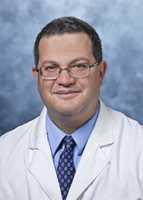Author Interviews, Exercise - Fitness, Frailty, Geriatrics, JAMA / 13.11.2018
Exercise During Hospitalization Improves Physical Functioning in Very Elderly
MedicalResearch.com Interview with:
 Mikel Izquierdo PhD
Head and Full professor
Department of Health Sciences
Public University
Navarra, Spain
MedicalResearch.com: What is the background for this study? What are the main findings?
Response: Acute hospital admissions are a major contributor to disability in the elderly. Despite resolution of the reason for hospitalization, patients (especially those who are frail) are often discharged with a new major disability. This is a problem that providers of health care and policy makers should prioritize given the expectations of further growth of the population segment composed by old people.
Traditional models of acute hospitalization for older adults seldom include a comprehensive approach to prevent hospitalization-associated impairment in functional and cognitive capacity. In contrast, exercise and early rehabilitation protocols applied during acute hospitalization can prevent functional and cognitive decline in older patients and are associated with a reduced length of stay and lower costs. Yet, patients with cognitive impairment or multimorbidity at baseline are commonly excluded from exercise intervention trials and only ‘conservative’ or ‘traditional’ programs (i.e., focusing on light walking while avoiding resistance training) have been typically applied to elders who are acutely hospitalized. Our intervention proved safe and effective to reverse the aforementioned impairment. We therefore propose that an individualized prescription of multicomponent exercise should become an inherent part of the routine management of hospitalized older adults. (more…)
Mikel Izquierdo PhD
Head and Full professor
Department of Health Sciences
Public University
Navarra, Spain
MedicalResearch.com: What is the background for this study? What are the main findings?
Response: Acute hospital admissions are a major contributor to disability in the elderly. Despite resolution of the reason for hospitalization, patients (especially those who are frail) are often discharged with a new major disability. This is a problem that providers of health care and policy makers should prioritize given the expectations of further growth of the population segment composed by old people.
Traditional models of acute hospitalization for older adults seldom include a comprehensive approach to prevent hospitalization-associated impairment in functional and cognitive capacity. In contrast, exercise and early rehabilitation protocols applied during acute hospitalization can prevent functional and cognitive decline in older patients and are associated with a reduced length of stay and lower costs. Yet, patients with cognitive impairment or multimorbidity at baseline are commonly excluded from exercise intervention trials and only ‘conservative’ or ‘traditional’ programs (i.e., focusing on light walking while avoiding resistance training) have been typically applied to elders who are acutely hospitalized. Our intervention proved safe and effective to reverse the aforementioned impairment. We therefore propose that an individualized prescription of multicomponent exercise should become an inherent part of the routine management of hospitalized older adults. (more…)
 Mikel Izquierdo PhD
Head and Full professor
Department of Health Sciences
Public University
Navarra, Spain
MedicalResearch.com: What is the background for this study? What are the main findings?
Response: Acute hospital admissions are a major contributor to disability in the elderly. Despite resolution of the reason for hospitalization, patients (especially those who are frail) are often discharged with a new major disability. This is a problem that providers of health care and policy makers should prioritize given the expectations of further growth of the population segment composed by old people.
Traditional models of acute hospitalization for older adults seldom include a comprehensive approach to prevent hospitalization-associated impairment in functional and cognitive capacity. In contrast, exercise and early rehabilitation protocols applied during acute hospitalization can prevent functional and cognitive decline in older patients and are associated with a reduced length of stay and lower costs. Yet, patients with cognitive impairment or multimorbidity at baseline are commonly excluded from exercise intervention trials and only ‘conservative’ or ‘traditional’ programs (i.e., focusing on light walking while avoiding resistance training) have been typically applied to elders who are acutely hospitalized. Our intervention proved safe and effective to reverse the aforementioned impairment. We therefore propose that an individualized prescription of multicomponent exercise should become an inherent part of the routine management of hospitalized older adults. (more…)
Mikel Izquierdo PhD
Head and Full professor
Department of Health Sciences
Public University
Navarra, Spain
MedicalResearch.com: What is the background for this study? What are the main findings?
Response: Acute hospital admissions are a major contributor to disability in the elderly. Despite resolution of the reason for hospitalization, patients (especially those who are frail) are often discharged with a new major disability. This is a problem that providers of health care and policy makers should prioritize given the expectations of further growth of the population segment composed by old people.
Traditional models of acute hospitalization for older adults seldom include a comprehensive approach to prevent hospitalization-associated impairment in functional and cognitive capacity. In contrast, exercise and early rehabilitation protocols applied during acute hospitalization can prevent functional and cognitive decline in older patients and are associated with a reduced length of stay and lower costs. Yet, patients with cognitive impairment or multimorbidity at baseline are commonly excluded from exercise intervention trials and only ‘conservative’ or ‘traditional’ programs (i.e., focusing on light walking while avoiding resistance training) have been typically applied to elders who are acutely hospitalized. Our intervention proved safe and effective to reverse the aforementioned impairment. We therefore propose that an individualized prescription of multicomponent exercise should become an inherent part of the routine management of hospitalized older adults. (more…)






















 Faiz Gani, PhD
Postdoctoral research fellow
Department of Surgery
Johns Hopkins University School of Medicine
MedicalResearch.com: What is the background for this study? What are the main findings?
Response: Firearm related injuries are a leading cause of injury and death in the United States, yet, due to combination of factors, limited data exist that evaluate these injuries, particularly among younger patients (patients younger than 18 years).
The objective of this study was to describe emergency department utilization for firearm related injuries and to quantitate the financial burden associated with these injuries.
In our study of over 75,000 emergency department visits, we observed that each year, over 8,300 children and adolescents present to the emergency department for the treatment / management of a gunshot injury. Within this sub-population of patients, we observed that these injuries are most frequent among patients aged 15-17 years and while these injuries decreased over time initially, were observed to increase again towards the end of the time period studied.
In addition to describing the clinical burden of these injuries, we also sought to describe the financial burden associated with these injuries. For patients discharged from the emergency department, the average (median) charge associated with their care was $2,445, while for patients admitted as inpatients for further care, the average (median) charge was $44,966.
Collectively these injuries resulted in $2.5 billion in emergency department and hospital charges over the time period studied. This translates to an annual financial burden of approximately $270 million.
Faiz Gani, PhD
Postdoctoral research fellow
Department of Surgery
Johns Hopkins University School of Medicine
MedicalResearch.com: What is the background for this study? What are the main findings?
Response: Firearm related injuries are a leading cause of injury and death in the United States, yet, due to combination of factors, limited data exist that evaluate these injuries, particularly among younger patients (patients younger than 18 years).
The objective of this study was to describe emergency department utilization for firearm related injuries and to quantitate the financial burden associated with these injuries.
In our study of over 75,000 emergency department visits, we observed that each year, over 8,300 children and adolescents present to the emergency department for the treatment / management of a gunshot injury. Within this sub-population of patients, we observed that these injuries are most frequent among patients aged 15-17 years and while these injuries decreased over time initially, were observed to increase again towards the end of the time period studied.
In addition to describing the clinical burden of these injuries, we also sought to describe the financial burden associated with these injuries. For patients discharged from the emergency department, the average (median) charge associated with their care was $2,445, while for patients admitted as inpatients for further care, the average (median) charge was $44,966.
Collectively these injuries resulted in $2.5 billion in emergency department and hospital charges over the time period studied. This translates to an annual financial burden of approximately $270 million. 



